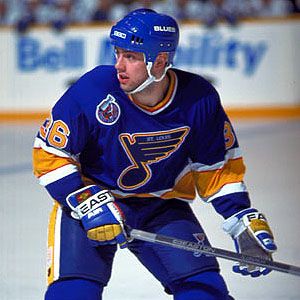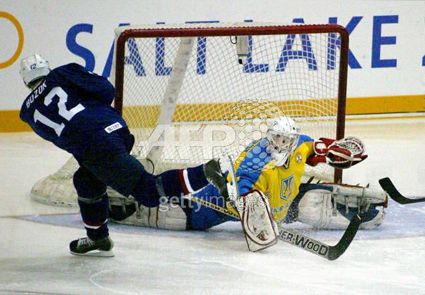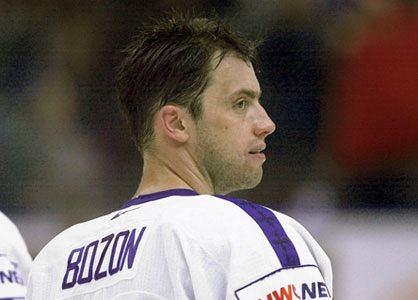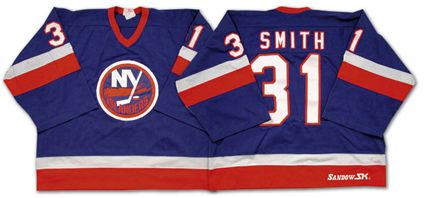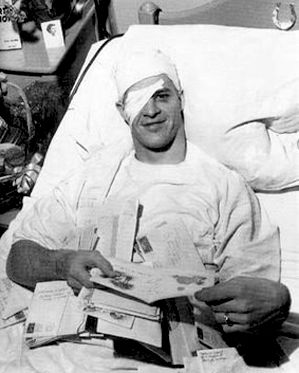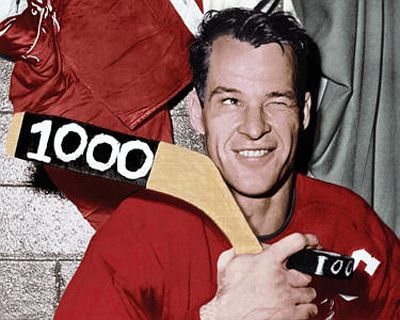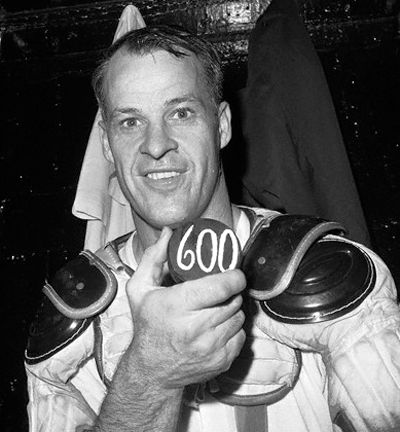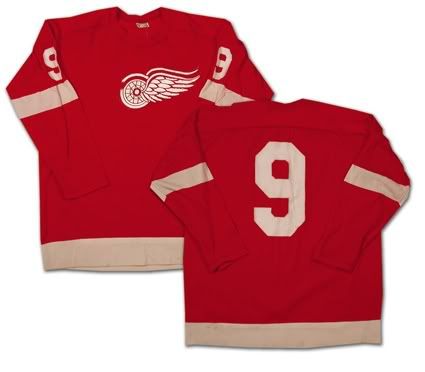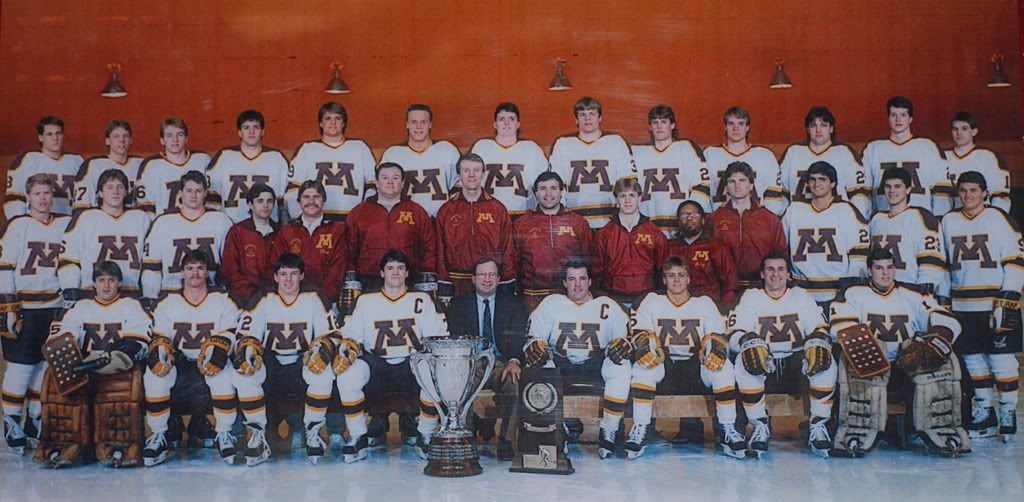Born on this date in 1966 in Chamonix, France, the site of the first Winter Olympics in 1924, Philippe Bozon became the first French-trained player in the NHL.
Bozon, whose father Alain Bozon was captian of the French National Team, grew up playing hockey in France and moved to Canadian junior hockey in 1984, scoring 82 points in 67 games and he followed with 59 goals and 111 points in 65 games in 1985-86.
The 1986-87 season saw Bozon split time between juniors and Peoria of the IHL before returning to France for the next five seasons, winning championships with HC Mont-Blanc in 1988 and CSG Grenoble in 1991 before making his NHL debut with the St. Louis Blues late in the 1991-92 season and scoring his first NHL goal in the final game of the season against the Minnesota North Stars.
1992-93 saw Bozon skate in 54 games, missing two months of the season with mononucleosis, scoring 6 goals and 12 points. He would establish himself as an NHL regular the following season, playing in 80 games, totaling 9 goals and 25 points and playing on the penalty kill unit.
He would return to France during the NHL lockout in 1994 with CSG Grenoble and make one appearance for St. Louis after play resumed, ending his NHL career with 144 games played, 16 goals and 41 points after finding he did not fit into new Blues coach Mike Keenan's plans.
A move to the Swiss second division with HC La Chaux-de-Fonds in 1995-96 was followed by a half a season with Lausanne HC in 1996-97 before moving to the German DEL with Adler Manheim, including a hat trick in his first game with the club. Bozon would score 15 points in 9 playoff games as Manheim would capture the championship.
Two more seasons with Adler Manheim would result in two more titles, with Bozon contributing 10 points in 10 playoff games in 1998 and 9 points in 12 games in 1999.
1999-00 would see Bozon relocate to the Swiss National League A with HC Lugano, totaling 88 points in 85 games over two seasons. A shift to HC Geneve-Servette of Geneva in the Swiss second division saw Bozon post a stellar 34 goals and 80 points in 43 games and lift the club back into the top level of Swiss hockey.
Three more seasons with the club would see Bozon average nearly a point per game, 116 in 124 games before retiring after the 2005-06 season.
His career combined totals stand at 588 goals and 1270 points in 1136 games, four French championships and three German titles.
In addition to his club hockey career, Bozon was a mainstay for the France National Team, with 12 World Championship appearances and four Olympic Games in 1988, 1992, 1998 and 2002, scoring a total of 96 career goals for France.
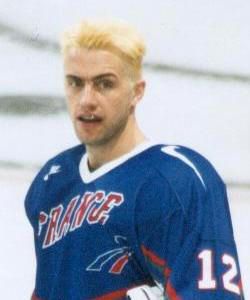 Bozon playing for France in 1997
Bozon playing for France in 1997
He would appear in the World Championships for France in the B pool in 1990 and then again in 1991, scoring 10 points in 7 games, being named the Best Forward and helping earn France a return to the top level. He would then appear in the World Championships in 1992 and then from 1994 to 2000 at the top level and one final time in 2001 in Division 1, for a total of 1 World Championship appearances.
His record in the Olympics shows 13 points in 21 games, including a hat trick against Italy in 1998 under the coaching of no less than Herb Brooks! His 7 points in just 4 games would rank him fifth in tournament scoring being Teemu Selanne, Saku Koivu, Pavel Bure and Alesksandr Koreshkov.
2002 in Salt Lake City saw Bozon score 6 points in 4 games, tied for fifth overall behind Mats Sundin (9 points), Brett Hull (8) and John LeClair and Joe Sakic (7), despite playing two less games than Hull, LeClair and Sakic.
Bozon was honored by being inducted into the International Ice Hockey Federation Hall of Fame in 2008 and recently named as head coach for the France National Junior Team in 2009.
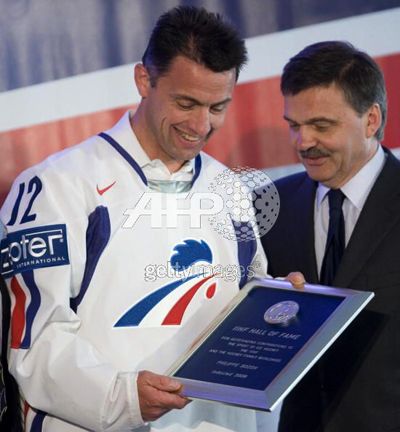
Today's featured jersey is a Nike 2002 France National Team Philippe Bozon jersey as worn in the 2002 Olympics in Salt Lake City. The jersey features a subtle black cross pattern running down the length of the arms. It's somewhat easier to see on the white jerseys, as the blue stripe is not lost in the sea of blue as on the road jerseys. One wonders why the blue stripe on the blue jerseys was not changed to either red or white for increased contrast and greater visibility for the black cross design.
This jersey took seven years of searching and patience before we were able to add one to the Third String Goalie Collection. Once obtained, the choice of Bozon for the customizing was an obvious choice. See if you can spot the black design running down the sleeve above and below the "2".
Here is some unexpected footage of Bozon playing in the NHL with St. Louis, unfortunately on the receiving end of a very questionable hit.
Video highlights of the French National Team are few and far between, so the best we can offer today is France vs. Switzerland from the 2008 World Championships, featuring Christobal Huet, the second ever French-trained player in the NHL after Bozon, in goal for France.
These next two games are France and Italy battling in the 2008 relegation round, with France coming out on top two games to none to avoid relegation for 2009.
